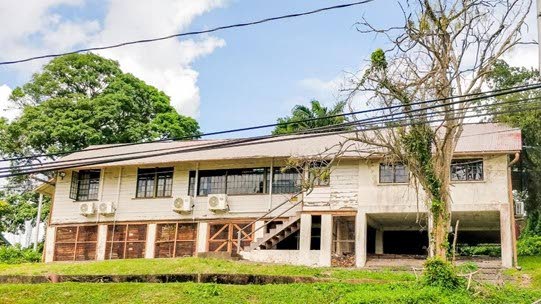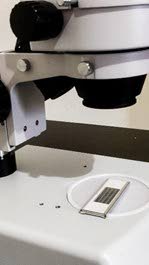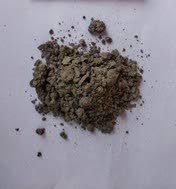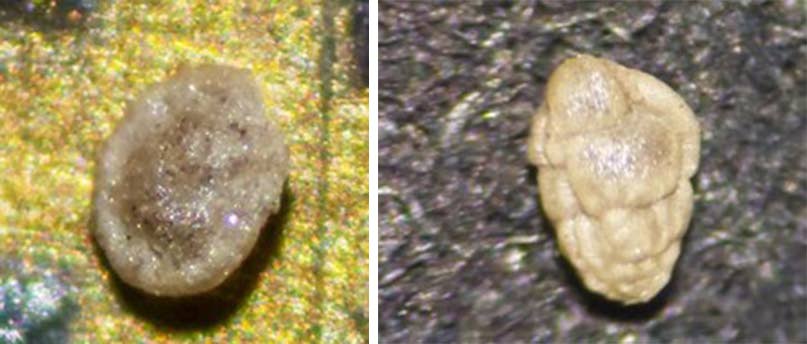Fossils and the petroleum industry of Trinidad and Tobago

GEOLOGICAL SOCIETY
When people hear fossils, they immediately think dinosaurs. Unbeknownst to most Trinidadians, fossils have played a leading role in the discovery and development of oil and gas fields onshore and offshore Trinidad and Tobago for over 100 years.
When wells are drilled, geologists examine cuttings (bits of rock fragments) that are circulated to the top of the drill string as the drillbit grinds through rock. These cuttings often have micro-fossils in them, that geoscientists called biostratigraphers use high powered microscopes to see.

Biostratigraphy is a branch of geology that uses fossils to establish the relative ages of sedimentary rocks. In the oil and gas industry there are three main disciplines of fossils: foraminifera (fondly known as forams), nano-palaeontology and palynology.
Palynology is the study of fossilised pollen, historically used in Trinidad. Nano-palaeontology is the study of fossils even smaller than foraminifera used intermittently in the hydrocarbon industry in Trinidad.

Foraminifera are widely abundant single-cell animals which are used to interpret ancient marine environments and determine rock ages from Palaeozoic to recent. They have shells (called tests) made of calcium carbonate. They are divided into two groups: benthic and planktonic (figures 1 and 2). Simply put, planktonic forams float in the ocean, while benthic forams are found on the seafloor. Critically for oil and gas, due to their small size, they are not destroyed by the drill bit, and thus can be examined from drill cuttings.
How does it work?
Say we know a particular bug (call it Fred) lived in a particular environment (say water 500 to 1000 ft deep) and existed during a particular period (say Upper Miocene, roughly between five and 23 million years ago). If that bug is found (in large quantities) in the cuttings from an oil-bearing reservoir, then we have a reasonably good indication that the rock was deposited between five and 23 million years ago in water 500 to 1000 ft deep. Therefore, if we are looking for the same reservoir elsewhere, we now know we should be looking for rock of that same age deposited in the same type of environment. Using geological models and data from other wells, we can figure out where we should drill, how deep and also what fossils to look out for.

This is a very simplified example but illustrates the point. Experienced biostratigraphers have examined thousands of forams and know their names, shapes and features extensively.
A fact that many do not know, is that Trinidad was the global centre for work in micropaleontology (studying microscopic fossils) from the 1940s to 1960s. Unfortunately, as much of the industry became nationalised in the 1970s, research in micropaleontology came to a halt in TT. Over the last 100 years more than 100,000 foraminiferal samples have been analysed in TT.
In Trinidad, studies of fossil foraminifera were first published in 1863 by Robert J Lechmere Guppy. Early studies focused on benthic foraminifera which were easily identifiable. Applications of foraminifera in the petroleum industry was initiated by Dr August Tobler in 1913. His young field scientist, Hans Kugler (known to some as the father of Trinidad geology for his compilation of our geological map in 1961), articulated the relationship of foraminifera analyses with worldwide geological correlations. This encouraged the industry’s first palaeontological laboratory at Pointe a Pierre, Trinidad in 1929 (figure 5). The lab functioned until 2018 when Petrotrin was closed.
From the 1940s emphasis was placed on planktonic foraminifera, high in abundance and greater accuracy in correlation. This group was used to establish geological ranges in Cretaceous and Palaeocene to Middle Miocene formations. Planktonic foraminifera work was done extensively between 1948 and 1957 by Paul Bronnimann, Hans M Bolli, Jean Pierre Beckmann, John B Saunders, R M Stainforth and Hans H Renz. They remarkably established the globally used planktonic biozonation for middle to low latitude regions which are utilised to this day. Joseph A Cushman and Percy W Jarvis also contributed to the commercial applications of foraminifera and published Cretaceous and Cenozoic foraminifera of Trinidad.
Trinidad’s geological history and hence oil and gas discoveries were predicated heavily on lithology (rock type) and foraminifera. Biostratigraphy has contributed to the production of 1.5 billion barrels of oil to date from 13,000 oil wells drilled onshore in the Southern Basin of Trinidad. This was accomplished without the use of seismic data, which is now a staple in exploration worldwide.

Fortunately, TT has a few experts in biostratigraphy, many of which were trained right here at UWI as well as at Petrotrin. In fact, former UWI Professor Brent Wilson has been one of the university’s most published authors over the last 15 years and has had several MSc, MPhil and PhD students specialising in micro-fossils.
Trinidad is known in the oil and gas community as a graveyard for geologists due to our extremely complex geology. Biostratigraphy has been one of the low cost yet relatively accurate tools in the geologist’s arsenal since the early days of the industry. Most recently, Touchstone Exploration has had massive success onshore in their Ortoire Block, finding oil, gas and condensate, giving new life to Trinidad’s onshore. Biostratigraphers have been employed while drilling these wells, and some of the fossils found are shown below.
The Geological Society of TT is a professional and technical organisation for geologists, other scientists, managers and individuals engaged in the fields of hydrocarbon exploration, academia, vulcanology, seismology, earthquake engineering, environmental geology, geological engineering and the exploration and development of non-petroleum mineral resources.


Comments
"Fossils and the petroleum industry of Trinidad and Tobago"